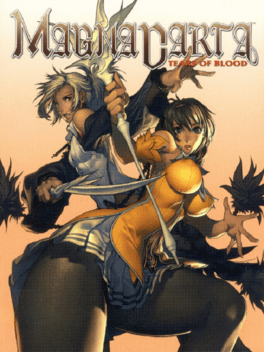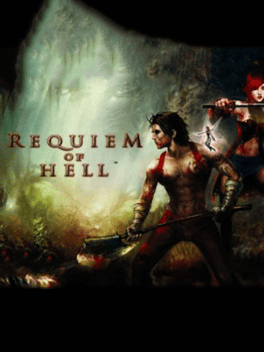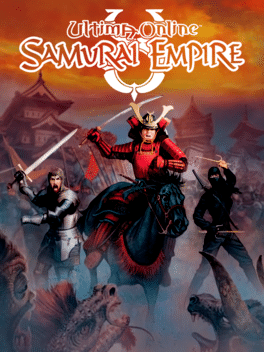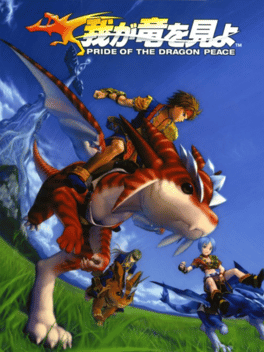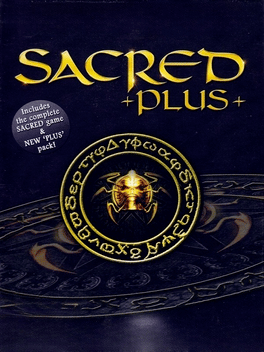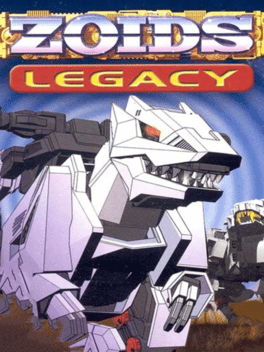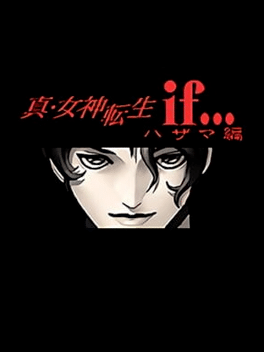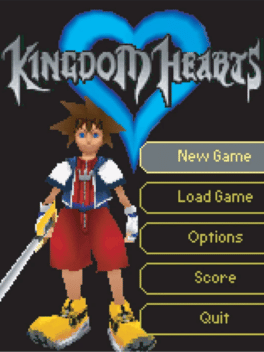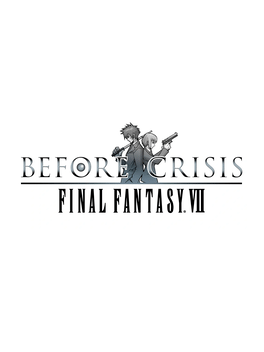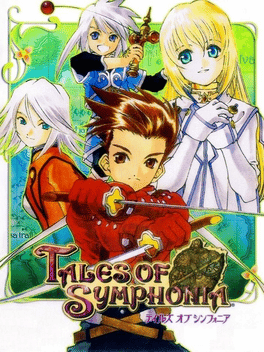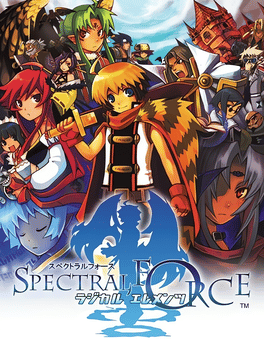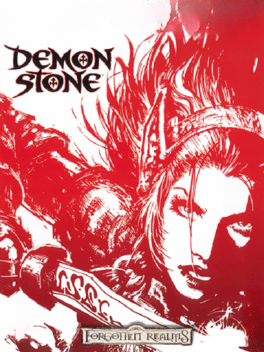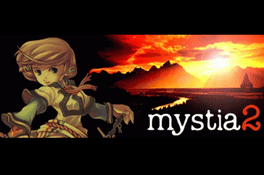New Xbox 360 Games - Page 213
-
Conquer Online 2.0
2004
Conquer Online 2.0
2004
Conquer Online is an MMORPG developed by TQ Digital Entertainment. It is available in English, French, Japanese, Simplified Chinese, Spanish, Traditional Chinese, and Arabic. The game landscape is a two dimensional rendition of mythical China with three dimensional characters. The game has a straightforward combat-focused play style, incorporating common elements of many MMORPGs such as wealth, fame and character development. -
Magna Carta: Tears of Blood
2004
star 4Magna Carta: Tears of Blood is a Korean-made RPG in Japanese style, and a sequel to Phantom of Avalanche; it is set in the same world and has the same protagonist. The game's combat system is turn-based at core, but requires the player to press buttons in a rapid succession and with precise timing to execute attacks. The characters can store up energy to unleash a stronger attack later. Using the technique named Carta, they can also perform various special moves which are based on elemental affinities. -
Requiem of Hell
2004
Requiem of Hell
2004
When a master demon from Hell named Dalu raises an army of undead, demons and fiends to ravage the world, an old wizard (Shaman) steps forth to stop Dalu and his forces. In a pitched battle, Shaman uses most of his power to decimate much of the demon army and fools Dalu into fleeing briefly. However, the old man realizes his weakened state won't stand up to another assault once Dalu returns from Hell. Shaman tells the fairy accompanying him (Gigi) to choose and revive a recently killed corpse that can fight against Dalu's minions and eventually gain enough power to defeat Dalu. After the introductory cinema, the player can choose to revive either a male (Troy) or female (Linda) who will take on enemies in different (and increasingly tougher) levels as the game progresses. Each character has a back story that ties them together, but the tragic connection between the two only becomes apparent as the endgame approaches... -
Ultima Online: Samurai Empire
2004
Samurai Empire is the seventh edition (sixth expansion) of Ultima Online. It adds unique Japanese-themed content, such as the new Ninja and Samurai professions, as well as a new landmass, the Tokuno Islands (the Land of the Feudal Lords first introduced in Ultima I). This expansion also introduces a powerful new guild system, new dungeons, enhancements to the house customization system, and a whole collection of new monsters, weapons, and wearable items. -
Wa ga Ryuu wo Miyo: Pride of the Dragon Peace
2004
Pride of the Dragon Peace is a simulation RPG in which you raise a dragon and ride it into battle. -
Sacred Plus
2004
Sacred Plus
2004
star 7.2A shadow of evil has fallen on the kingdom of Ancaria. It is a time for champions - a time to journey into the perilous world of SACRED. Battle blood-thirsty orcs & lumbering ogres... Destroy undead wizards & rotting mummies... Slay hellish demons & legendary dragons. With blazing magic & sharpened steel, prepare to embark on an epic quest of fantasy adventure & heroism. Sacred Plus incorporates all of the feedback from the player community since the first release of Sacred. This includes an optimized interface, and many completely new features: two new regions, two additional main quests, new item sets and weapons, and many new creature types which make adventuring in Ancaria even more dangerous. -
Zoids: Legacy
2004
Zoids: Legacy
2004
At the outer reaches of the universe, the human inhabitants on the Planet Zi remain locked in combat. The population, divided between good and evil, uses gargantuan life forms called Zoids to battle each other for control of this world. During a recent weapons experiment, Planet Zi underwent an accidental time-space fusion, creating a collision of Zoids warriors from two eras, the Chaotic Century and the New Century. Now, all hopes of returning Planet Zi to normal rest with Zeru, a promising Zoids warrior. Help Van, Fiona, Bit Cloud and Zeru use the full power of the ZOIDS to bring peace to their world. As the story unfolds, players can customize and upgrade their own unique Zoids to improve its efficiency and perform combination attack moves. Released in Japan as Zoids Saga II, Legacy features more than 140 different types of Zoids, each can be customized with different weapons and new color schemes. -
Seal of Evil
2004
Seal of Evil
2004
An action-RPG, set in the last few years of the Warring States period in ancient China more than 2,200 years ago. At that time, Qin gradually became the most powerful state in China and began making an overall plan to conquer the other six states. The story of the game picks up several years after a fierce war between the Qin troops and the people of Baivue. Military leader Lan Xiong, who was instrumental in fighting back the Qin, and his wizard, Chi Huan, both die under mysterious circumstances. What or who was behind their deaths? In the role of Lan Wei, Lan Xiong's daughter, players set out on a dangerous adventure into the Central Plains to find out the truth and make her father live again. -
Shin Megami Tensei: if... Hazama-hen
2004
Shin Megami Tensei: if... Hazama-hen is a cell phone game published in 2004 as a prequel to Shin Megami Tensei: if.... The game explains how Hazama has ascended to become the Deity Emperor and sent Karukozaka High into the Expanse. -
Magical Fantasista
2004
Magical Fantasista
2004
Aim for a brilliant and outstanding wizard "Fantasista"! Players should become "Horin", a student of the magic vocational school of the magical kingdom "Nebula" and clear the assignment while exploring the "Seven Yosei" area at the magic synthesis repair camp. Through the adventure, "Horin" will grow greatly, and eventually you will create a powerful magic and aim for the "Fantasista" of the magical world. -
Kingdom Hearts
2004
Kingdom Hearts
2004
Kingdom Hearts brings back the gameplay elements featured in the original Kingdom Hearts, though it was developed exclusively for V Cast, Verizon Wireless's broadband services. Sora moves similar to a tank, with one button on the control pad moving him forward, another moving him backwards, and two more turning him left or right. Even with these new controls, Sora can still perform a number of moves aside from running and jumping. He can climb trees and ladders, grasp the edges of platforms and pull himself up, lift and throw objects, and use the Keyblade to slide down zip lines. Sora can still use the Keyblade and also magic, the first spell he learns being Blizzard, to fight like in Kingdom Hearts. Munny and Experience are still earned by defeating Heartless. As opposed to Kingdom Hearts, however, Kingdom Hearts introduced "assistant characters," such as the Caterpillar and Swordman Parrot, as opposed to guest party members. -
Before Crisis: Final Fantasy VII
2004
Before Crisis: Final Fantasy VII is a Japanese action role-playing game developed and published by Square Enix in 2004. It is the prequel to Final Fantasy VII, taking place during the six years prior to it. Before Crisis was the first original (i.e. not an enhanced remake) game Square Enix produced for mobile phones. -
Tales of Symphonia
2004
Tales of Symphonia
2004
The Playstation 2 version of Tales of Symphonia adds extra content such as new animated cutscenes, story events, and costumes. -
X-Men Legends
2004
X-Men Legends
2004
star 7.5X-Men enter the realm of role-playing games with an intense story, superhero action, and multiplayer modes. The story in X-Men Legends begins when the X-Men learn that Magneto has devised a plan to give mutants the power to reign supreme over humans. To save the human race from imprisonment, you compose a four-person team from a roster of X-Men characters, including Storm, Gambit, and Wolverine. -
Spectral Force: Radical Elements
2004
Spectral Force: Radical Elements is a Role-Playing game, developed by Neverland and published by Idea Factory. It is a Japan-only release that focuses more on huge armies rather than a small group of heroes. -
KnightOnline
2004
KnightOnline
2004
Knight Online is one of the most popular free MMORPGs in the world. The main element for its enduring success is the game’s PvP elements. Besides the ongoing battle between the two races; humans and orcs, players can form clans and wage war against one another. Players earn ranks by killing members of the opposing race and can earn special Knight titles, cash rewards, and other benefits. Each of the two nations has several race choices but both share the same 4 class options. Many countries have their own KnightOnline communities, including America (USKO), Japan (JPKO), Europe (EUKO), Korea, and Malaysia (MYKO). Each server generally runs a different version of the game, with the server in America generally being the most up to date. Tons of unique loot and bosses help create a hardcore PvP-focused MMORPG where the main goal is to become the strongest player on the server! -
EverQuest: Omens of War
2004
Omens of War is the eighth expansion for the popular MMORPG franchise, EverQuest. -
Forgotten Realms: Demon Stone
2004
star 6.2Centuries ago two unspeakably evil forces were entrapped in a Demon Stone while battling each other. Now three adventurers happen to meet by chance and discover the Demon Stone just as it breaks and releases the two spirits: a Githyanki general and a Slaad lord. Now only these three can prevent a war that will sweep over all Faerun. Forgotten Realms: Demon Stone is an action RPG set in the world of Dungeons & Dragons: Forgotten Realms. Take control of three heroes, Rannek the fighter, Illius the sorcerer, and Zhai the rogue, as they try to destroy the evil unleashed by the breaking of the Demon Stone. The player only controls one character at a time but can switch between them on the fly with the direction pad. Each character has his/her own attack and can perform combos by pressing certain button combinations, e.g. B + B or A + B + A, and even perform team attacks and a team super attack. As they gain experience they will gain levels and can purchase new moves (combos) or upgrade old ones with experience points. T -
Dragon x Dragon 2 Complete Version
2004
In addition to beautiful graphics, the mini-game floor is further enhanced, and the original version of the distribution in other carriers includes scenarios, episodes, productions, and emotional expressions cut for the convenience of capacity, and the details are enriched. There is. Strengthening the production of the battle system, and while inheriting the "nurturing limit system" which is a feature of the Dragon X Dragon 2 original version (50KB version), it is also possible to "grow by experience". The appearance of the new character Nahot tribe who gives items, and other elements after clearing the temple are also fully packed. You can enjoy the world of "dragon x dragon" more deeply through the fun of advancing the adventure while solving the mystery and the active battle scene. " In "Dragon x Dragon 2 Complete Version", the final boss character "2nd form" will appear, which did not appear in the original version. -
Mystia2
2004
Mystia2
2004
"mystia2" consists of three chapters, and the party changes for each chapter. The first part and the second part 2 apps together are about 500KB, and you can enjoy the world view of "mystia" more deeply in a large volume scenario. It is a variety of storylines such as 32 kinds of magic, more than 100 kinds of monsters, and field dungeons on 20 maps, but also emphasizes operability. With an automatic save system that automatically saves even if the game is interrupted, and a memo system that allows you to remember where to go next, RPG beginners are also safe. In addition, we have introduced a treasure collection system, so you can enjoy treasure hunting in a vast map along with the progress of the story. "mystia2" is a fantasy RPG set on the continent of Mystia, one year after the previous work "mystia". In this work, which consists of all three chapters, the party changes for each chapter. A large volume of scenarios around the "King's Sword" left by the gods and the "Masty Stone" that manipulates the gods You

